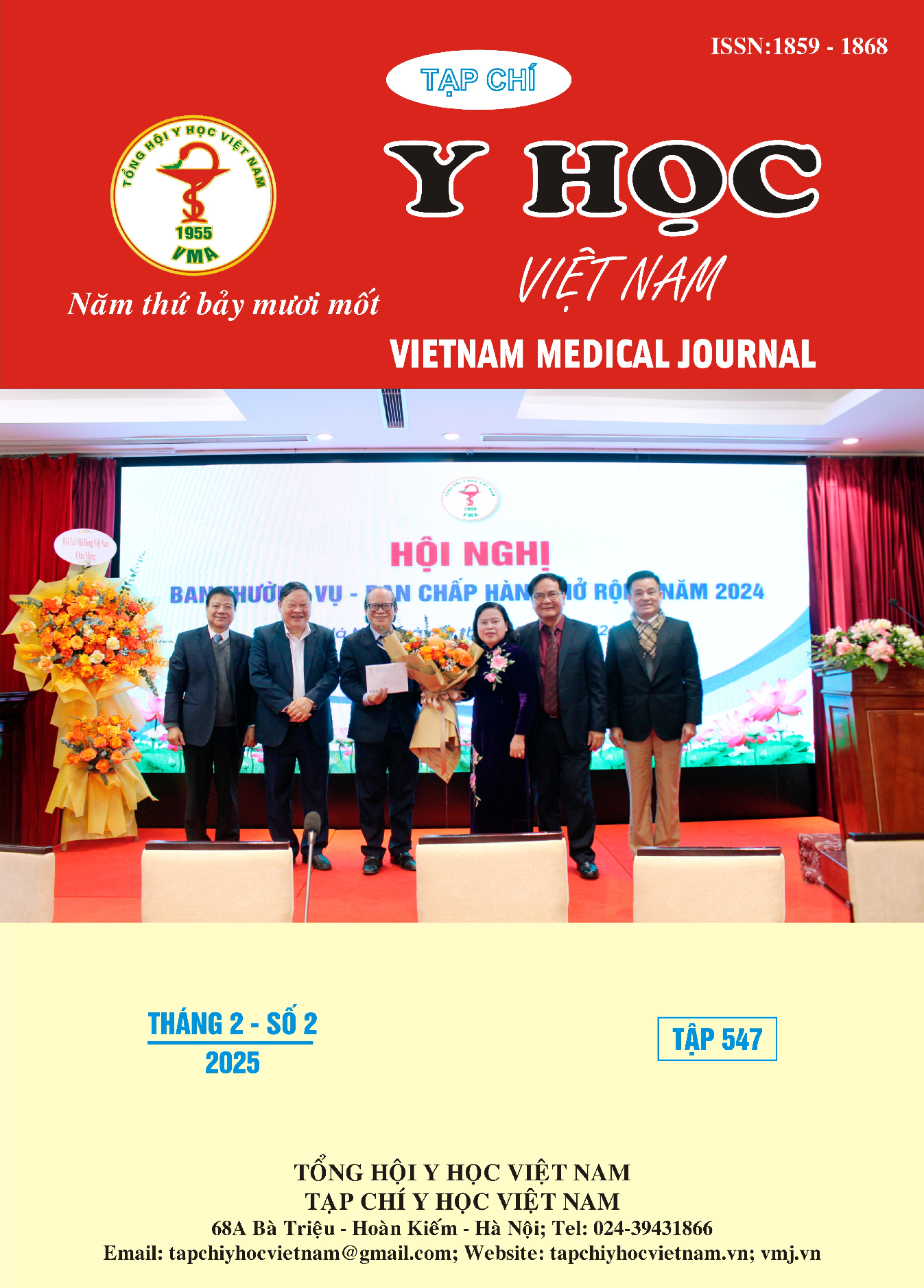REVIEW OF SOME CLINICAL CHARACTERISTICS OF DOUBLE-LEVEL LUMBAR SPONDYLOLISTHESIS PATIENTS WITH SUGERY AT 175 MILITARY HOSPITAL
Main Article Content
Abstract
Objective: Review of some clinical characteristics of double- level lumbar spondylolisthesis patients with sugery at 175 military hospital. Subjects and Methods: Retrospective description from 5/2020 to 12/2023, 30 cases of double- level lumbar spondylolisthesis were operated by transforaminal lumbar interbody fusionat at the Department of Neurosurgery in 175 Military Hospital. Evaluating some clinical characteristics. Results: The majority of research subjects were women (73.3%). The majority of patients were between 50-59 years old (46.7%) and 40-49 years old (26.7%), with only 2 cases over 70 years old (6.7%). There were 3 cases with a history of spinal trauma (10%). The majority of patients had a disease onset time of 24 months or more (76.7%), with the majority of patients having a gradual onset (80%). The most common reasons for hospitalization were back pain and radicular pain (100%). The most common clinical symptoms in the studied patients were back pain, radicular pain, spinal tenderness and bell sign (100%). 73.3% of patients had severe pain (VAS = 5-6) and all patients had a level of spinal dysfunction of 3 or more on the ODI scale. Conclusion: Double- level lumbar spondylolisthesis has a higher incidence in women, usually occurring between 40 and 59 years old. The disease usually begins slowly with the most common clinical symptoms being back pain, radicular pain, spinal tenderness, and bell-clicking signs. Patients often experience high levels of pain according to VAS, and patients have reduced spinal function according to the ODI scale.
Article Details
Keywords
Double- level lumbar spondylolisthesis, lumbar, clinical characteristics.
References
2. He Da, Li Zu‐chang, Zhang Tian‐yu, et al. (2021) Prevalence of lumbar spondylolisthesis in middle‐aged people in beijing community, 13(1): 202-206.
3. Wiltse L. L. (1975) Spondylolisthesis. West J Med. 122(2): 152-153.
4. Dương Tùng Anh, Nguyễn Hoàng Long (2021) Kết quả phẫu thuật xâm lấn tối thiểu hàn xương liên thân đốt qua lỗ liên hợp điều trị trượt đốt sống thắt lưng.
5. Möller Hans, Sundin Agneta, Hedlund Rune (2000) Symptoms, signs, and functional disability in adult spondylolisthesis. Spine 25(6): 683-690.
6. García-Ramos C. L., Valenzuela-González J., Baeza-Álvarez V. B., et al. (2020) Degenerative spondylolisthesis I: general principles. Acta Ortop Mex. 34(5): 324-328.
7. Hùng Kiều Đình, Vũ Nguyễn, Hải Đinh Mạnh, et al. (2021) Kết quả điều trị trượt đốt sống thắt lưng tại bệnh viện đại học y Hà Nội. Tạp chí nghiên cứu y học. 147(11): 169-176.
8. Wu Q., Yuan S., Fan N., et al. (2021) Clinical Outcomes of Percutaneous Endoscopic Lumbar Discectomy for the Treatment of Grade I and Grade II Degenerative Lumbar Spondylolisthesis: A Retrospective Study With a Minimum Five-Year Follow-up. Pain Physician. 24(8): E1291-e1298.


